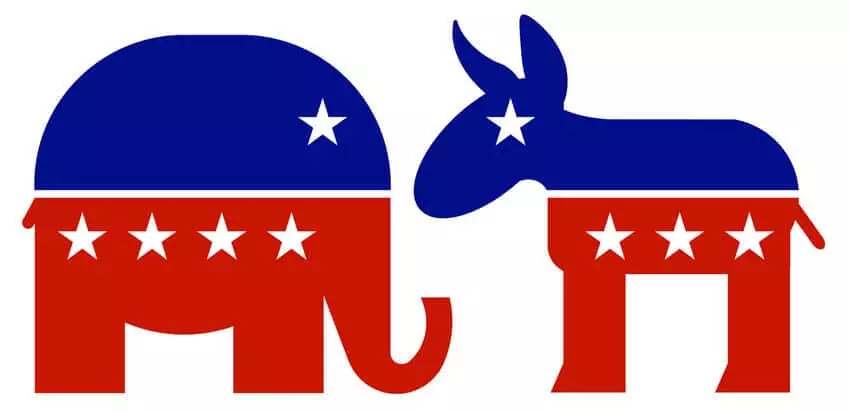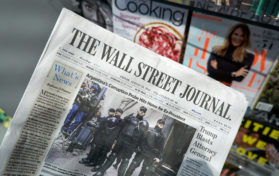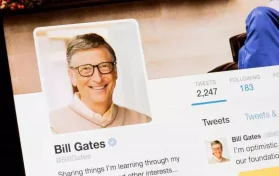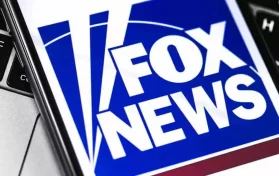
In the political setup of the United States, individuals can be categorized into two main categories.
We have the liberals and the conservatives. They are also known as the left-leaning or right-leaning members.
Contemporary American politics assigns the tag conservatives to denote members and supporters of the Republican Party. Members of the Democratic Party and their supporters are tagged as liberals.
Liberals and conservatives are extreme ends of the political spectrum—the two ideologies conflict in many issues surrounding governance and fiscal issues. The division has only grown wider in recent times due to modern-day politics’ volatile nature.
Republicans and Democrats are ideological extremes. But what of those who don’t identify as liberals or conservatives?
What is a moderate in politics?
A moderate is a person who ascribes to neither the extremes of conservatism nor liberalism. They take a neutral stand on issues of politics and religion. A moderate therefore is bound by neither the identities nor the philosophies of left-wing or right-wing politics.
Moderate Republicans/Liberal Republicans
While it might sound like a contradiction, some republicans can be classified as liberals. They are members of the Republican Party who hold views considered liberal and moderate.
Nelson Rockefeller is credited mainly with outlining some of the fundamental beliefs held by moderate republicans.
President Abraham Lincoln was a moderate Republican, ascribing to social justice beliefs and abolishing slavery in the United States.
While there isn’t a particular set of beliefs that ties down all moderate Republicans, they do not hold extreme traditional beliefs of the party.
They might support fiscal and monetary policy to increase output while supporting strict conservative immigration policy.
The main points of ideological differences between right-wing republicans and moderate republicans are social issues. The issues primarily revolve around immigration, social justice, minority rights.
Moderate Republicans are fully recognized as to be members of the GOP. They support the party in democratic processes like elections.
However, they might hold different views in the legislature. They also attend Republican rallies and other party events.
In some cases, moderate Republicans support legislation not traditionally considered right-wing.
Moderate Democrats/Conservative Democrats
Introduction
Identified as a faction within the Democratic Party, Conservative democrats fall in the middle of the left-leaning spectrum of politics.
Members largely align themselves with the larger Democratic Party concerning the social beliefs of liberalism. They still manage to retain a conservative stance on fiscal policy.
In the wake of domineering, conservative movement success in the 1980s elections in America, the Democratic Party unveiled the conservative democrat movement.
It was considered a third way, a reinvention to see them competitive politically amid successive defeats.
Social liberalism is one key uniting factor between liberal democrats and conservative democrats.
The ideology offers a stark contrast compared to individualism in that it prioritizes collective liberties. It does not align itself to the concerns of the individual.
Egalitarianism is highly regarded in social liberalism, focusing on collective equality over individual liberty.
Highly favored among its members is a relentless focus on social justice and everyday welfare activism enforced with powerful federal intervention and governance.
On occasion, the economic policy views of moderate democrats draw a wedge between them and the far-left-leaning spectrum within the Democratic Party.
In comparison, liberal democrats emphasize the urgency of everyday welfare spending by the federal government.
Moderate democrats side with the conservative approach of prudent government spending with limited debt.
Within fiscal conservatism, a laissez-faire approach occurs where transactions within private groups of people are freely conducted to exclude state interference.
The fiscal conservative stance favored by moderate democrats closely mirrors neoliberalism which libertarians favor.
In this case, the policy model dictates that the political and economic factors be entirely transferred to the private sectors.
Unlike neoliberalism, where a progressive tax is favored, libertarians argue instead for a flat tax. They are unreservedly opposed to federal bailouts of industries. The libertarian approach also goes against more federal intervention.
Criticisms Of Moderates
Many groups who don’t support the idea of centrism have come up with criticism surrounding the concept of moderatism. Both members of the political divide share the criticism.
Their key concerns often revolve around the idea that centrists oscillate between their parent party and populist ideology.
Many critics also associate centrism with weakening the political and fundamental beliefs of the parent party. It fosters distrust within party members, especially concerning legislation.
Call votes on the house floor are usually weak where a party has many moderates.
Moderates criticize both far-right and far-left members for their rigidity concerning certain issues. They believe in flexibility and neutrality.
The Liberal Ideology
The liberal ideology is centered around certain beliefs regarding politics and religion. It is connected to the Democratic Party and is one of the two most popular ideologies in the United States.
Here are some of the general beliefs held by the Liberals:
The government’s role in the economy:
Liberals ascribe to the Keynesian Theory of Economics. They believe that the government and the Federal Reserve Board have a significant role in putting the economy in equilibrium.
Liberals believe that the interaction of supply and demand factors needs to be regulated not to bring about extreme fluctuations in economic output.
The government should set fiscal policy regarding its expenditure to regulate inflation and optimize the employment of capital and resources.
The Federal Reserve Board should also set an expansionary and contractionary policy to regulate inflation through Open Market Operations.
The approach to social issues:
Liberals tend to be strong proponents of the concept of social justice. They believe in the equality and rights of the LGBT movement. They also support the idea of same-sex marriage and push for its legalization across the states.
Liberals also push for voting rights for minority groups. Liberals support the concept of universal suffrage, extending to all groups with some exceptions. They are strong proponents of economic equality and advocate for policies that reduce wealth inequality.
Liberals have links with social justice movements that support affirmative action. They also ascribe to a particular set of pro-choice reproductive rights.
Immigration policy:
The immigration policy adopted by liberals is different from those adopted by republicans. Liberals ideally believe in providing roadmaps for citizenship for undocumented immigrants. They also believe in taking in refugees fleeing political turmoil in their home countries.
Religion:
Liberals believe in religious liberalism. Religious liberalism is a concept that rationality and personal liberty to one’s religion. They are not opposed to the concept of secularism.
Liberals believe that religion is personal and not a national unification and cohesion tool.
The Conservative Ideology
Finding its roots in 1850s America, the conservative movement emerged as critical philosophical ideals in western culture and American society.
Comprising fiscal conservatives and social conservatives, the two components joined together in 1854, forming The Republican party.
The movement’s claims of advocacy are a limited government, laissez-faire economics, privatization, reduced government spending, deregulation, low taxes, Christianity, and constitutionalism.
Christianity in the conservative movement has long maintained that the United States of America was founded as a Christian nation.
Abortion, as is in the original Christian view, is considered a sin is interfering with the sanctity of life.
The fiscal conservative view heavily gravitates towards individualism, where the individual’s rights granted under the constitution prioritize collectivist concerns.
Low taxes and deregulation are favored in the movement, considering the success of a private enterprise in a thriving economic environment.
Constitutional conservative beliefs take a vigorous defense of the United States Constitution. Its original structures, as well as the principles of liberty, are the basis of its foundation.
Constitutional conservative advocacy takes the view that America’s governing structures are the reference points to the vision of its founding fathers. They believe that it represents what a united, solid country should be.
One essential constitutional belief in defense of liberty is the second amendment. It grants the American citizen the right to keep and bear arms and America’s cultural norms and values.
Libertarianism closely follows conservative constitutional beliefs with an insistence on keen legislative intervention to limit federal power.
The movement provides strong advocacy for personal freedoms without coercion or interference by federal authorities.
It tends to occur within the right to have private property and the control of the individual regarding the same.
Conclusion
The two most widespread political ideologies for democratic states globally are liberalism and conservativism. They are either right-leaning or left-leaning.
The political set of ideologies doesn’t always suit some people’s beliefs and ideologies. It is the extremes that don’t present themselves as ideal options. Political moderates retain an unbiased approach to political and religious views.
Moderates occupy the mid-point of the political spectrum. They typically vote for parties considered to be centrist. They do so to maintain non-partisanship concerning politics.





